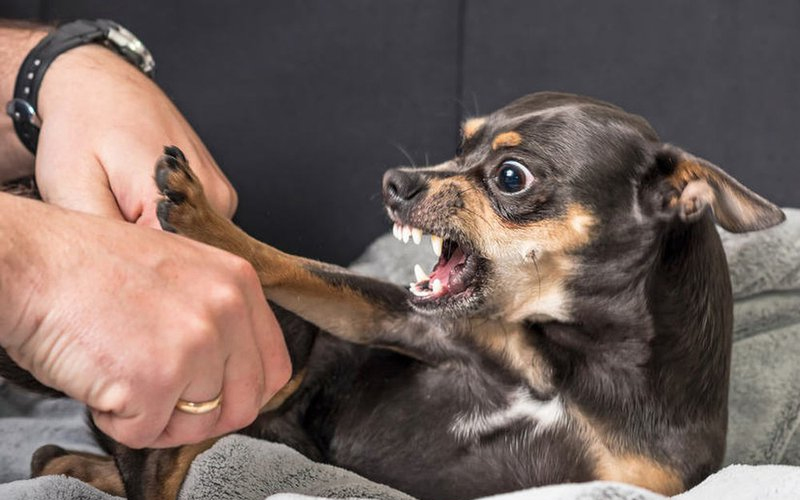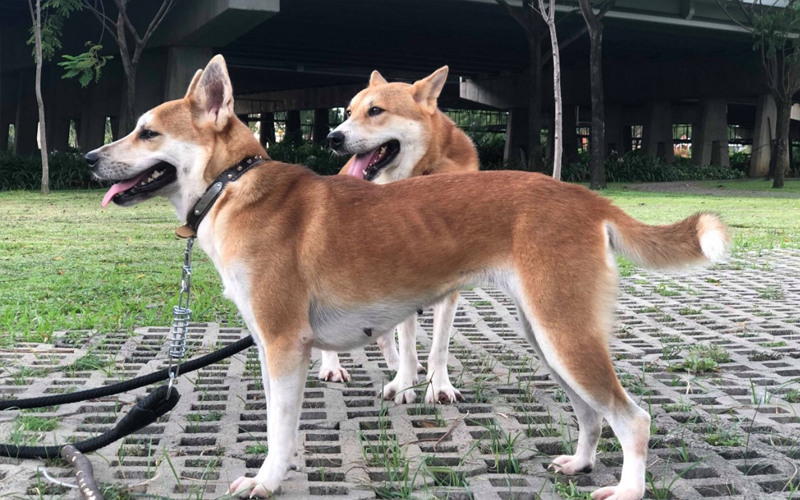Choosing the right dog involves a lot of intuition and observation. One can often tell a dog’s intelligence and agility just by looking at it, and sometimes, you can also spot signs of disloyalty. Join us as we explore how to spot the signs of a potentially disloyal dog and how to avoid making the wrong choice.
1. Signs of a Potentially Disloyal Dog According to Folklore
 Signs of a Potentially Disloyal Dog
Signs of a Potentially Disloyal Dog
According to traditional beliefs, some physical traits in dogs indicate potential disloyalty. Here are some signs to look out for:
A dog without spots on its tongue may not be the smartest and could have a tendency to bite and steal your belongings.
A dog with a white-tipped tail tends to be disobedient and unreliable as a guard dog, and it may also steal food.
A dog with a curled tail may defecate indoors when young and become timid as it grows older. It is also believed that dogs that tend to curl their tails to the left bring bad luck to their owners.
A dog that runs away when people approach is likely timid and insecure. Instead, look for a dog that is bold, playful, and interactive with people. Also, be cautious of dogs that tend to bare their teeth, growl, or wrinkle their noses, as these can be signs of aggression.
2. Why Do Dogs Bite Their Owners?
Dogs are typically loyal and affectionate, but if your dog has bitten you, it’s essential to understand the possible reasons behind this behavior:
Anger, Sadness, or Jealousy
 A Dog Expressing Negative Emotions
A Dog Expressing Negative Emotions
Dogs experience a range of emotions, including happiness, sadness, anger, and jealousy. If your dog has bitten you, try to understand its emotional state and provide extra care and training to reinforce discipline.
Avoid harsh treatment, such as shouting, beating, or chaining your dog for extended periods. Also, refrain from starving your dog, feeding it raw meat, encouraging destructive behavior, or allowing it to bite people. These actions can foster aggression and disloyalty.
Choosing the Wrong Breed
Some dog breeds are naturally more aggressive, such as the Bullmastiff, Dogo Argentino, Cane Corso, Tibetan Mastiff, and Doberman. Owners of these breeds should have the knowledge and experience to handle and train them effectively.
Adopting an Adult Dog
 Adopting an Adult Dog
Adopting an Adult Dog
Dogs adopted as adults may have a harder time bonding with their new owners. Puppies that are raised from a young age tend to be more loyal and obedient. Adopting an adult dog, especially one that is over two years old, can be a challenging task.
Improper Training
Dog bites often result from inadequate training. It’s crucial to train your dog consistently, from basic to advanced commands, to ensure better control and obedience.
We hope this information helps you make an informed decision when choosing a dog and avoid those with potential signs of disloyalty. With the right knowledge and training, you can foster a loyal and loving relationship with your furry friend.
Investigating the Features, Maintenance, and Expense of Border Collie Breeds
Experts weigh in on the reasons behind the loving bond between people and Border Collies. Find out why these dogs have earned such a special place in people’s hearts as well as the key characteristics that make them so unique. Plus, get a grasp on the expenses to watch for when taking on the responsibility of owning a Border Collie.
The Shih Tzu Breed: Unveiling the Intricacies of Their Nature and Care
The Shih Tzu is an ancient breed of dog originating from China, and their popularity has recently boomed in Vietnam. With their adorable appearance and affectionate nature, it’s no wonder that many are keen to learn more about this breed, their unique characteristics, and the specific care they require.



































